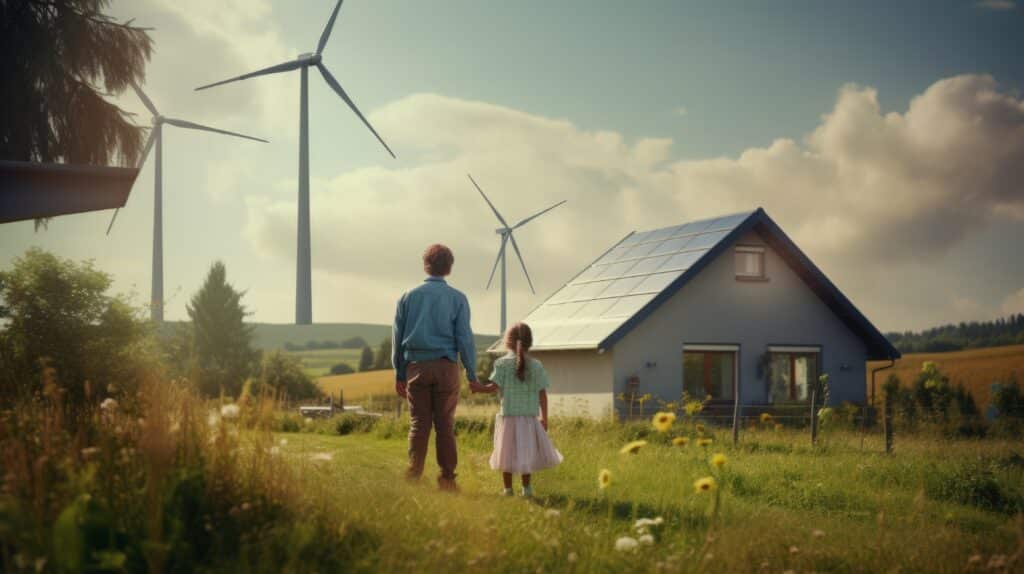Recent years have seen an explosion in the number of drones used for leisure or professional purposes, and the proliferation of wind farms on land and at sea. As such, there are more and more sources of aerodynamic noise. And these are likely to disturb the public along with animal biodiversity. Regulations are becoming stricter and, generally at a European level, noise limits are being imposed that must not be exceeded. But noise levels are not easy to define, and the perception of certain sounds is sometimes irrational.
Sound modelling using “sound models”
In 2017, researchers asked around 40 people to listen to 103 sounds made by drones flying at different altitudes and the noises made by different four-wheeled vehicles. The listeners were then asked to rate them from “not at all annoying” to “very annoying”. The result was that, even at the same volume, the sound of drones is much more annoying to the human ear than that of cars or lorries1. The authors of the experiment suggested that this was probably because we are used to the noise of these vehicles. The same applies to the noise generated by wind turbines.
Compared with many other environmental noise sources, whether man-made or natural, the noise levels generated by a wind farm are moderate. According to a study by Céréma2, the sound rarely exceeds 40 dBA outside a resident’s home. In comparison, traffic passing in front of a resident’s home can emit more than 70 dBA, which is a noise level that by law must not be exceeded. Wind farms located in predominantly rural environments generate a relatively low level of local background noise, but this can contribute to the perception of noise. In addition, wind noise contains low frequencies (20–200 Hz, audible) or infrasound frequencies (below 20 Hz, generally considered inaudible) which can travel further than higher frequency sounds.
“While the annoyance caused by noise increases with the level of noise exposure, its development does not generally follow a simple law and depends on each noise source and its characteristics (continuous noise vs. impulse noise, low-pitched vs. high-pitched noise, etc.),” explains Olivier Doaré, professor at the Mechanics Unit (UME) at ENSTA Paris. His laboratory is conducting studies into the modelling of different noise sources, including one on wind turbines. “For these devices, the noise level in decibels is not significant, because the noise is not uniform. It is characterised by temporal fluctuations in amplitude, potentially linked to the weather, the shape of the blades, etc.”

The laboratory has been working on modelling the sources of aerodynamic noise from wind turbines and the propagation of sound in the atmosphere. The aim is to be able to simulate the resulting ambient noise before a wind farm is installed. “The idea is to be able to hear the farm before it is built, as if we were creating a sound model rather than a visual one”, explains Benjamin Cotté, a lecturer at ENSTA (IP Paris) and co-author of the study, along with David Mascarenhas, now an engineer at Capgemini. The researchers hypothesised that various factors were being overlooked in the measurement of wind turbine noise, such as the height and quality of the ground (whether it is more or less absorbent) on which they are installed, or the effect of wind direction and profiles on the propagation of sound.
By developing a tool for synthesising wind noise, using physical modelling rather than sampling, they can analyse the sensitivity of sounds. This can be done according to a number of factors: blade geometry, wind or temperature profile, upstream turbulence rate. This also makes it possible to predict the power of the noise for each segment of the wind turbine blade. Sound syntheses are thus produced and presented for different meteorological conditions.
These processes, which aim to recreate a sound environment (known as “auralisation” of wind turbine noise), can be used in virtual reality applications. The study is part of the European Virtual Reality Audio for Cyber Environments (VRACE) network.
Practical technical solutions
In practice, the challenge facing the designers and operators of wind farms is to reduce the noise generated by the machines, to avoid complaints from local residents. Different approaches are being studied or have already been implemented. “It is possible to influence the speed of rotation or the angle of pitch of the blades,” explains Benjamin Cotté. “Some teams are working on intelligent tools that automatically regulate wind turbines to minimise noise while optimising production. One of the latest advances is the use of “combs” or “serrations”. These are elongated “saw-toothed” parts, directly inspired by the wings of nocturnal birds of prey, which can fly in perfect silence thanks to the spread of their wingtip feathers, which allow air to pass through, thus reducing turbulence.” These combs are attached to the trailing edge of the blades. They reduce aerodynamic noise by an average of 2 to 3 decibels, by reducing the turbulence created by air friction at the tip of the blade.
As far as drones are concerned, more research is underway. The “Aero-acoustics of multi-propulsion systems for UAVs” (APRO) project, in partnership with the Computer Science and Systems Engineering Unit (U2IS), aims to improve understanding and modelling of noise generation in multi-propulsion systems. The aim is to limit noise pollution. Doctoral student Caroline Pascal is looking to automate the analysis of acoustic fields using robotic measurements. Today, her work enables the precise characterisation of propeller radiation, and will make it possible to optimise the trajectory, speed, and acceleration of a drone, in order to limit noise pollution.
Marina Julienne
References :
Mascarenhas, D., Cotté, B., & Doaré, O. (2023). Propagation effects in the synthesis of wind turbine aerodynamic noise. Acta Acustica, 7, 23.
Mascarenhas, D., Cotté, B., & Doaré, O. (2022). Synthesis of wind turbine trailing edge noise in free field. JASA Express Letters, 2(3).








